Three London Snake Owners on the Reality of Keeping Exotic Pets
When I moved to London from New Zealand, I thought the city’s wildlife peaked at seeing mice on Tube tracks and hearing foxes have loud sex. That all changed when I joined a Facebook job-seekers page, where a woman announced that she had lost her snake and offering £10 an hour to anyone who wanted to come and look for it.
While the post taught me a lot about how shit the London job market could be, I also learnt that owning a snake in London isn’t terribly uncommon. In fact, 0.4% of households in the UK have one, making it more common to own a snake than a mouse. And, to my surprise, the Facebook post blew up and fellow London snake owners were offering their time and telling similar stories of their own lost pets.
“We used to find ours in the airing cupboard, hope you find yours babe”, one commented. “I’ve heard people find them round the inside edge of the toilet bowl”, said another. But London cemented itself as an urban jungle when: a) when a video of a boa constrictor eating a pigeon in Leytonstone went viral and; b) when a woman in west London woke up to find a one-metre-long royal python in bed beside her. With this in mind, and considering that VICE ran some videos hosted by a snake charmer of sorts earlier this year, I chatted to a few London snake owners about their slithery companions:
Paul O’Shea, Mortlake: “There’s no such thing as a tame snake”
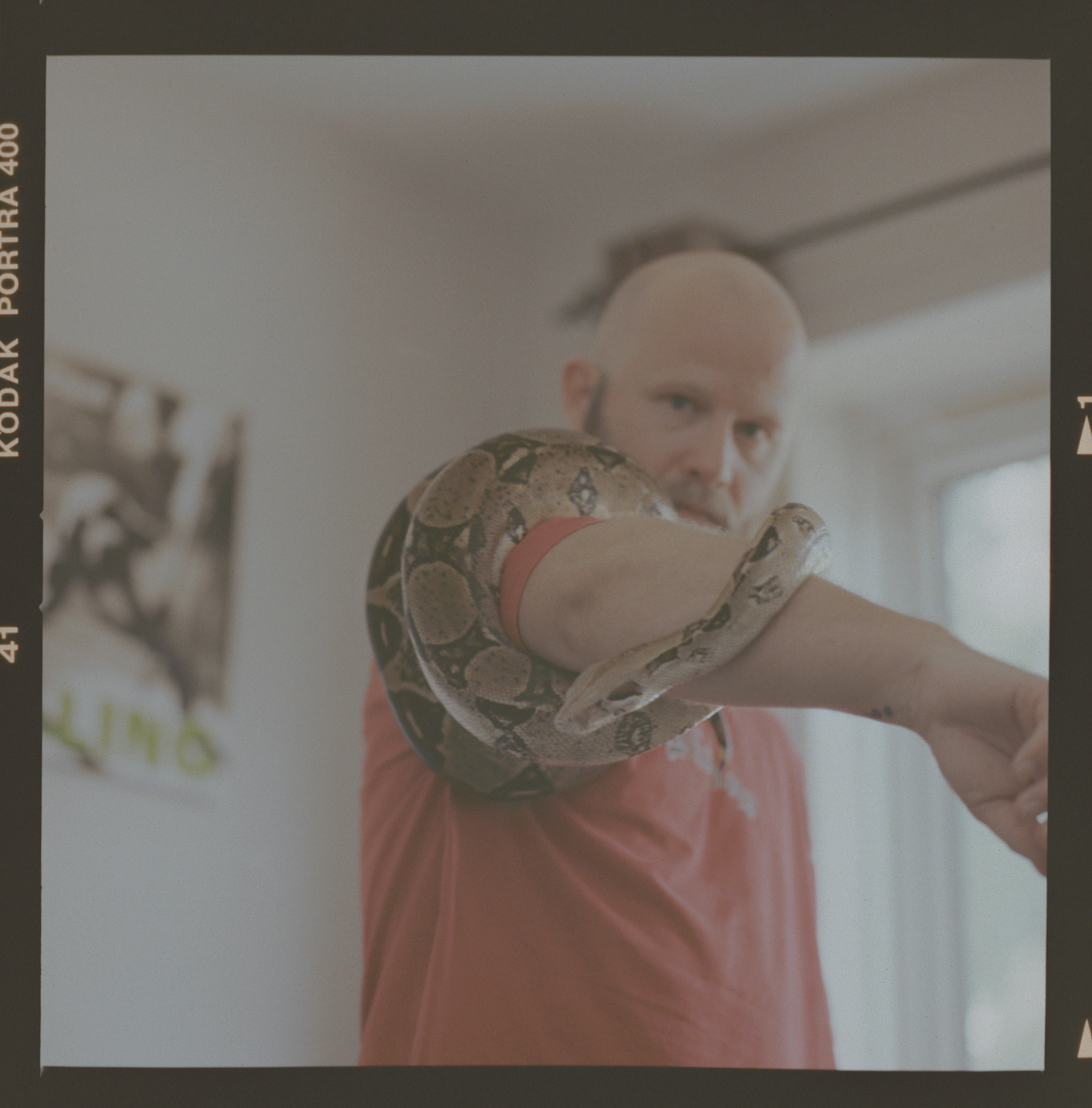
VICE: How many snakes do you have?
Paul: Two. I’ve got a python called Ruby, and have a boa constrictor called Khaleesi.
Why did you decide to have snakes as pets?
At some point when I was young, maybe early teens, I did a little bit of work for a short period of time in a pet shop that had them, which fed some sort of intrigue and fascination. From then I knew I wanted to own one when I grew up. One day I finally thought, you know what, I’ve spent years thinking about this, so I took the plunge and bought my first one.
Do you feel like people have misconceptions about them?
Not really, in my experience. Most people show a keen interest and maybe a bit of surprise. If the subject comes up or I tell people, it’s an overwhelmingly positive reaction.
Are they tame, then?
No. I mean I’m not an expert – this is my opinion and I’m basing it off some of the stuff that I’ve read – but there’s no such thing as a tame snake. They tolerate humans by constant interaction. So if they’re held and handled often from a young age, they’ll grow comfortable with us handling them.
So there’s no affection, as such?
Well it pains me to say it, but no. I like to think that they show affection and that Khaleesi’s actually watching TV with me. But inside I know that’s not really true. But there are individual personalities and I would say the two snakes are totally different; Ruby’s really shy, really timid. She’s maybe six or seven. Khaleesi’s about three or four. So both of them are rescued. I went to view them from private sellers and saw the kind of conditions they were in and I couldn’t turn away. One of them, I believe, was a breeder. And the other one was from someone who basically bought an animal and didn’t realise what he was getting himself into. He was literally petrified to hold it – he had protective clothing on.
Do you ever feel fearful of your snakes yourself?
No.
Have you been bitten?
Yeah, Ruby has bitten me twice, actually. And both times were my fault. The simple golden rule is any time you go to handle a snake, approach it with your hand.
Sonia Potter, Crayford: “You have to be prepared to handle dead rats daily”
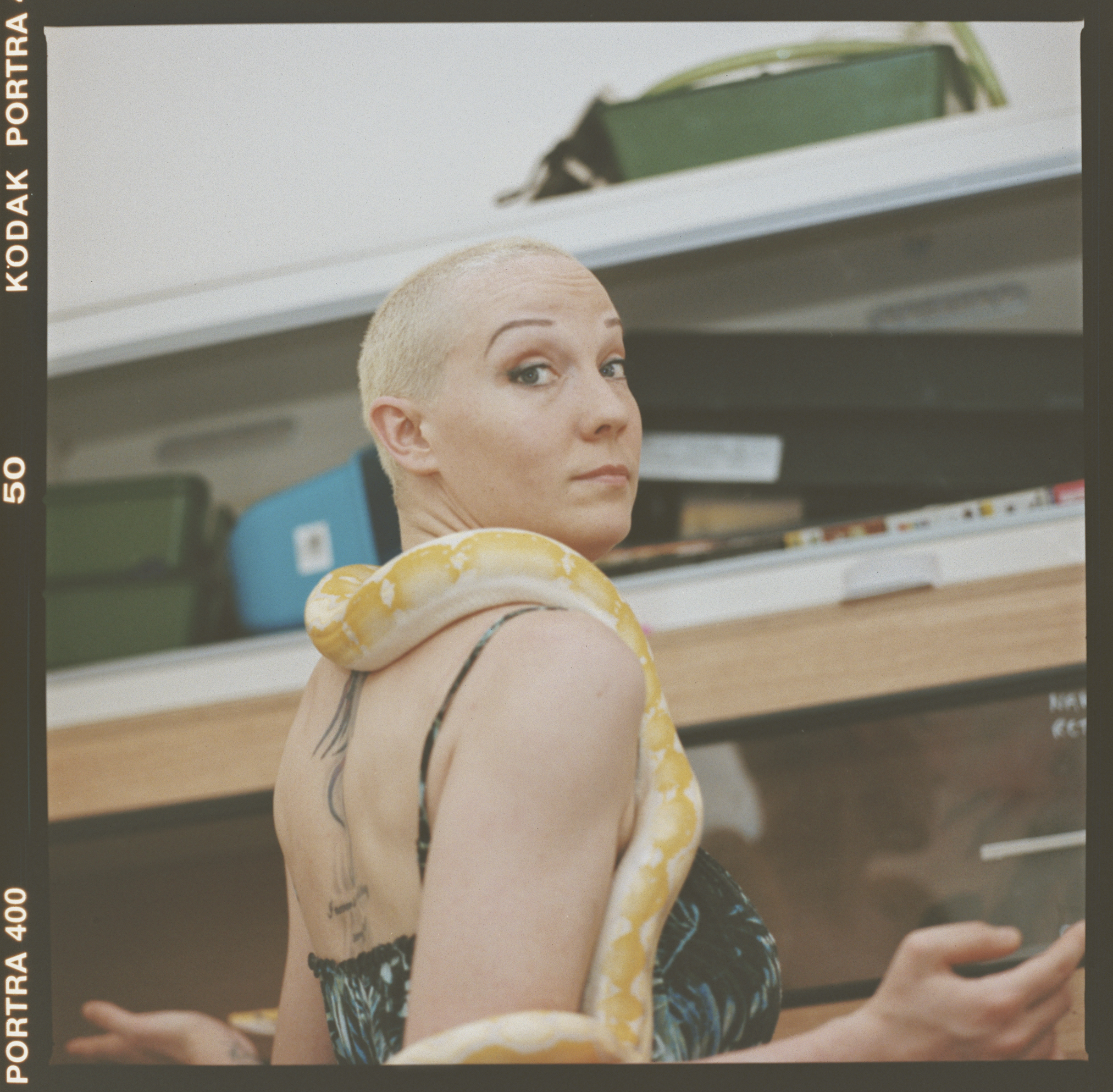
VICE: Hey Sonia, what’s the best thing about owning snakes?
Sonia: The cuddles, most definitely.
Of course! What initially drew you to them?
We had several snakes when I was growing up, and I’ve always just really loved them. However, it wasn’t until my daughter told me she was afraid of snakes that I decided to start keeping them again.
Oh… hang on, what?
She wasn’t even three and had never seen a real one, but she’d already begun to learn from other children and her cartoons that they’re an animal to be feared. I want her to grow up without these common irrational fears. So, I started looking at the idea of getting us a snake that she could learn about to hopefully show her that they aren’t the frightening creatures she imagined.
Where did you get them from?
All seven of them are either rescued or re-homed from someone who couldn’t keep them anymore. Three of them were in fantastic health, and had been really well-loved by their previous owner, but he was emigrating and couldn’t keep them. My first two were being sold on a second-hand selling site for a pittance by a guy who’d thought that snakes would be a good ‘manly’ animal to have. So he’d bought them on a whim from someone he met in a pub, only to then realise that he was terrified of them. Another, I took from a girl who had already rescued it a couple of months earlier but wasn’t able to keep it long-term. My newest was actually via the same girl, who contacted me hoping I’d take on another rescue. He’d been left in a box by his previous owner.
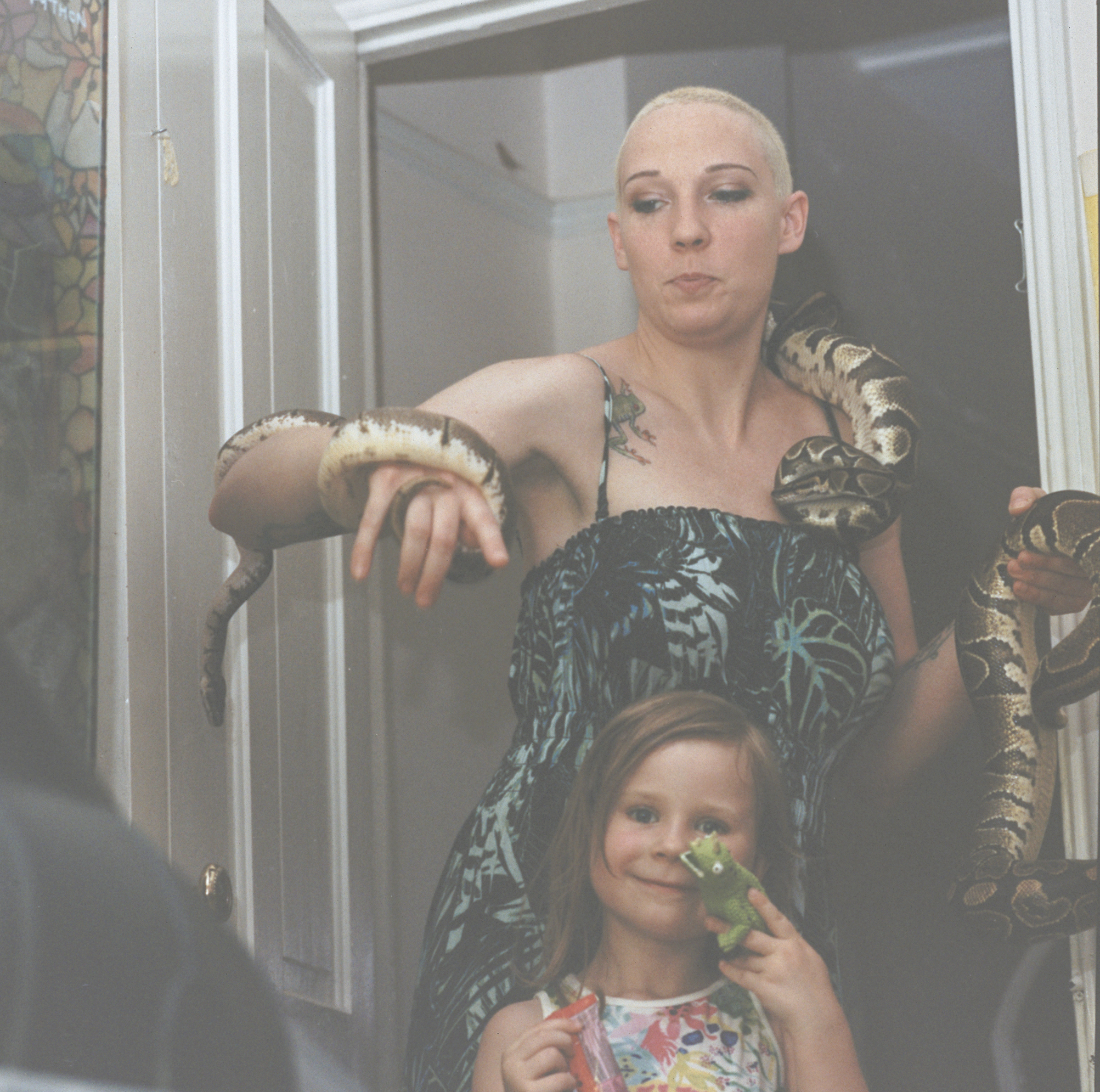
How do people react when you tell them you have snakes?
It’s usually excitement, curiosity or absolute enthusiasm. Even people who haven’t interacted with one before are generally very interested to come and see them and learn more, and even more hesitant people end up cuddling at least one once they meet them. On the odd occasion, I’ll speak to someone who hates the idea of them, but it’s quite rare.
What’s it like to have snakes in an urban area?
Crayford is a small suburban town right near the Dartford Crossing. I don’t have a garden so I don’t get to exercise them outside as much as I’d like to, but on warm days I can take one or two across to the park opposite my house for a stretch in the sunshine. Otherwise, I don’t think it makes too much of a difference where you live really, although being in a city makes finding a decent reptile vet a lot easier.
Do your snakes all have different quirks? Tell us about a few of them.
My two reticulated pythons are called Sid and Nancy. They’re siblings from the same clutch and yet they have different personalities. Sid is a total cuddle bug and always wants to be out of the tank and be handled or go exploring. Nancy is also very friendly, but she’s definitely less outgoing and would often rather stay in a warm spot in the tank than come out and about. They both really like climbing on people’s heads and in hair, especially dreads. Sophie is my smallest, she’s a spider morph royal python. She’s incredibly sweet-mannered and docile and likes to sit coiled around my wrist. She has a common neurological condition which is known in the trade as “wobble,” which means she sometimes has no idea which way up she is and will corkscrew her head around and around and often falls if she tries to climb or navigate over obstacles. I’m assured that she’s in no discomfort, though.
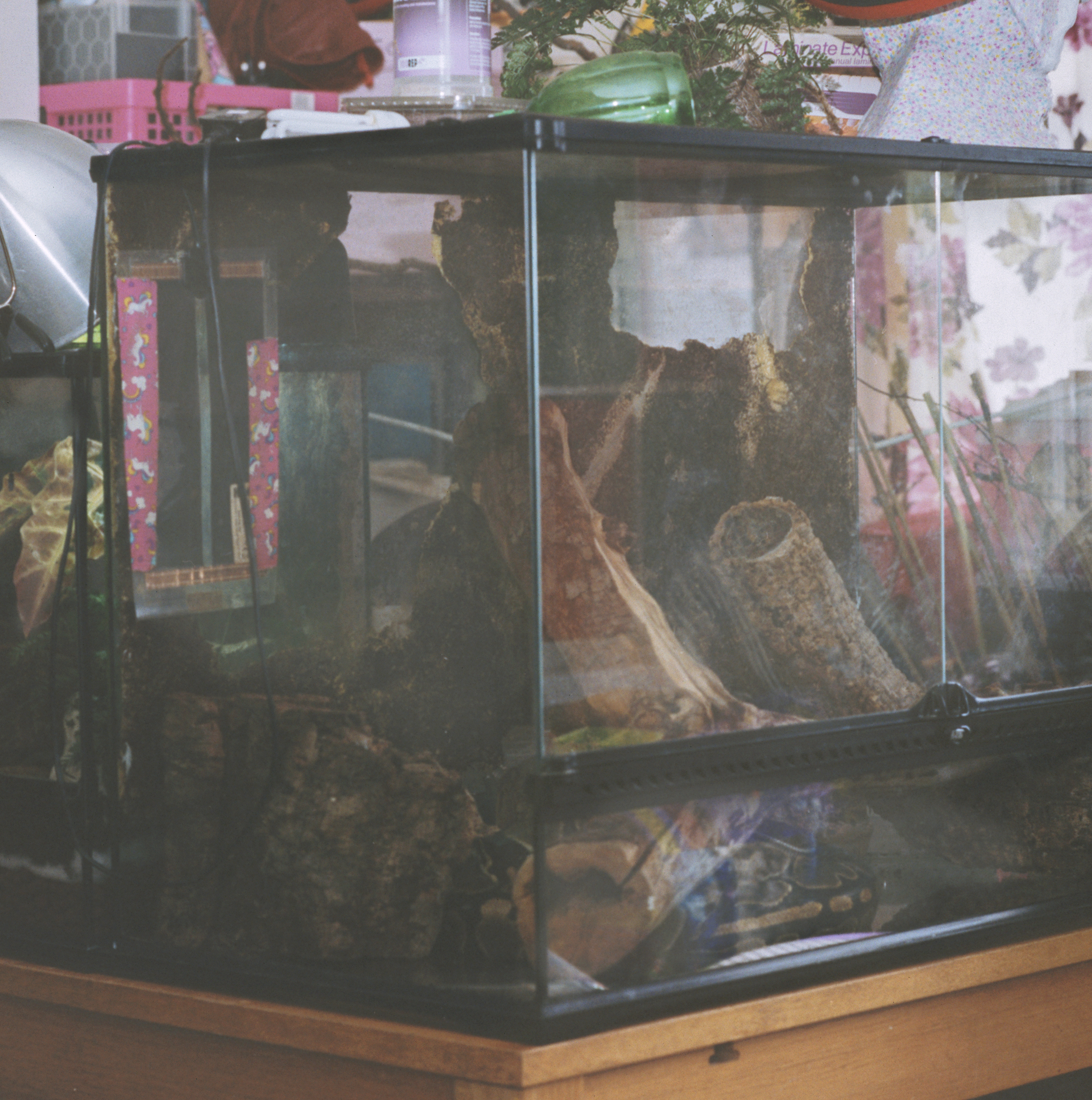
What are some ethical considerations you had to take on board owning an exotic animal?
I had to be prepared to feed them rats, which means handling dead rats on a regular basis. I know a few people for whom that would be a deal breaker because of their own moral and ethical dietary choices. I choose not to breed any of my snakes. For me that’s a huge ethical consideration. I personally feel there should be restrictions on who can breed and sell snakes, particularly the large breed pythons. I also had to be prepared to keep them for their entire lives, no matter how large they get. I’m fully aware that in 15 years I’ll have two 15- to 20-foot pythons, but I knew that when I took them on.
Jim Fox, Richmond: “I’ve had a few burlesque dancers borrow mine”
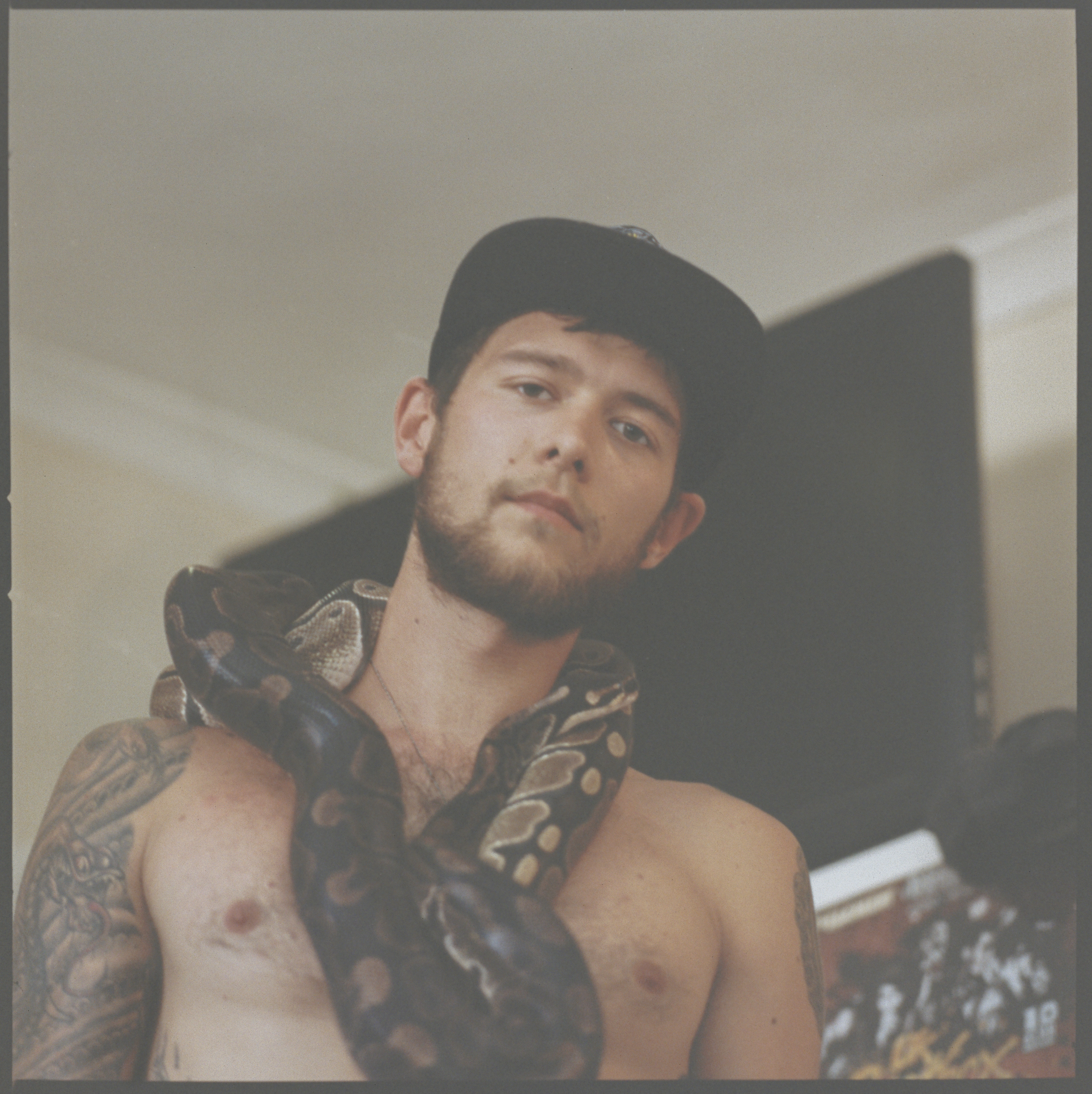
VICE: So, go on: how did you end up owning 16 snakes?
Jim: Well the first one I got was for my 16th birthday. I started accumulating them because I realised that loads of people didn’t want their pets.
What kind of environment do they live in?
They all live in vivariums, some shared and a couple of them solitary.
How much do they all have different personalities?
They’re all well different. You’ve got Lurking and Gurkin, who are both really shy; they live in the same tank together. I have to separate them for eating because it’s quite hard, in case they go for the same bit of food. Imagine two snakes trying to eat the same thing…
Do you feel quite attached to your snakes?
I think so, yeah. With my job – I’m a beatboxer and musician – I travel the world, but generally the only reason I come back to England is for them.
How do people generally react to your snakes?
Most people are fearful. I’ve currently got some babies at the moment and it’s really good to show people them because they see that they can fit in the palm of their hand.
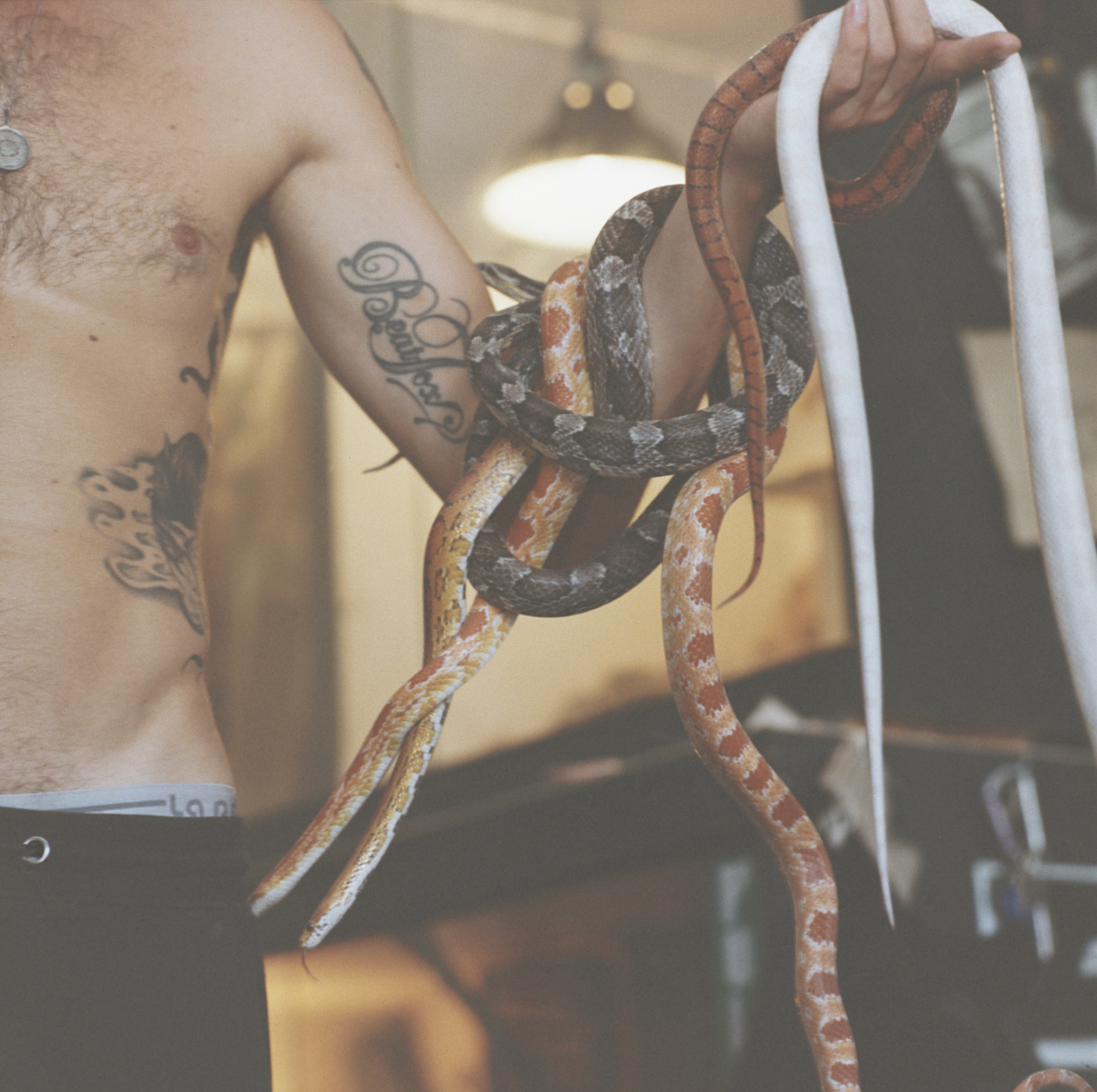
Do you breed as well?
I didn’t intend to breed, but I had a pregnant snake so I had to get the babies out. There were four. They’re really jokes, they’ve only just starting striking at four months old. You’d think a snake would do that automatically, but when they were babies they didn’t even know what food was so I had to hand-feed them.
Do you ever feel scared of your snakes?
Sometimes. All the little ones, like the corn snakes I’m not scared of, but the boa constrictor I can be scared of her. She’s almost eight foot.
Have you ever brought someone home who’s been terrified?
I’ve had to cover them up a couple of times, yeah… The sheet that I’ve covered them with has fallen down before and I’ve woken up to a scream.
Do your snakes ever get used for performance acts?
I had a few burlesque dancers who would borrow the snakes. I usually go with them. I think if you show snakes the respect they deserve then there will be no issue. Most people only get bitten or something happens because they’re disrespectful to a snake. For example, they say, “oh my god, look at it” and poke it in the face. Imagine if you met someone for the first time and they harmed your face … you would be like “what the fuck” as well.
@hendrikseindia / @isaackariuki.jpg
This article originally appeared on VICE UK.